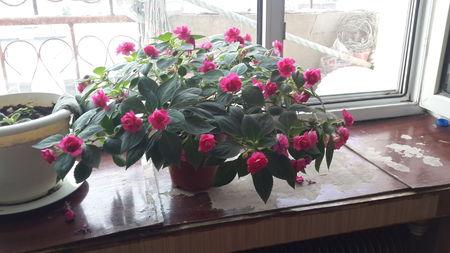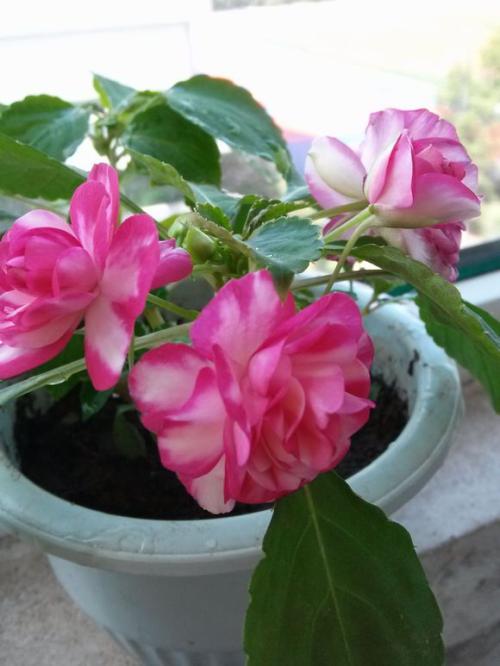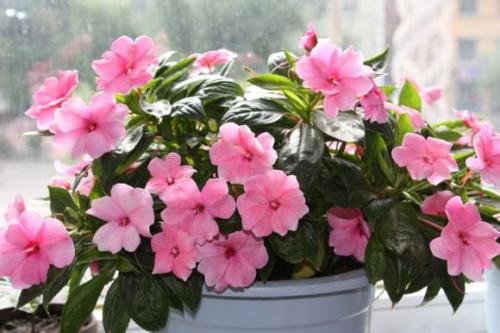Water jasmine profile
Written by Maggie
Jan 13 2021

Water jasmine, also called Wrightia religios, is an evergreen shrub or small tree of the genus Water jasmine of the family Oleander. Water jasmine is a tropical region from Thailand to Vietnam. Water jasmine is an important hedge plant in Southeast Asia.
Water jasmine picture

Morphological characteristics of Water jasmine
Branches and leaves
Water jasmine (Wrightia religios) branches grow in scattered places, with opposite lanceolate leaves, smooth paper leaves and wavy leaf margins.
Flowers
The inflorescences of Water jasmine (Wrightia religios) cymes grow from the end of branchlets, with slender peduncles, 5 white petals, and stamens convergent.
The drooping white flowers bloom from spring to autumn, especially in the plum rain season. They bloom most when there is plenty of rain. The flowers will give off an elegant fragrance, which will be more obvious after rain or when the humidity is high.
The flowering period of Water jasmine is from spring to autumn.
Ecological habits of Water jasmine
Water Jasmine (Wrightia religios) likes warm climates. Full or half sunshine can be grown, the soil must have water retention, with fertile loam cultivation is best.
Growing methods of Water Jasmine
Water needs to be supplied during the high temperature of summer to avoid water shortage affecting the growth and flowering of plants. Branches are easy to spread and must be trimmed.
Propagation using air layering method or cutting method, cutting cuttings in late spring or early autumn. The production is mainly based on the specifications of garden wood above 1 foot basin, and there are also a few 7 inch basin young plants. Choose the trunk strong, branching. Resistant to pruning, well branched and can grow thickly. Use this feature, so it is also a bonsai production of good material. The garden is planted with multiple single plants or multiple clusters, and trimmed and shaped. Because the flowers are drooping and small in size, they need to be planted close enough to be appreciated.
Disease control of Water jasmine
There are many reasons for falling buds and yellow leaves in Water jasmine. Insufficient nutrition and hormone imbalance in plants during the growth period are internal causes; inadaptation to conditions such as light, temperature, humidity, fertilizer and Water, as well as invasion of diseases and insect pests are external causes.
1. Soil pH
Sand soil with pH value ranging from 5 to 6.5 is more suitable. The soil is too acidic or alkaline, clayey soil, saline-alkali soil, and calcareous soil will cause poor growth of Water jasmine flowers, and some trace elements cannot be absorbed. The lack of phosphorus, iron, sulfur and other nutrient elements in the soil will also form a lack of green, falling bud phenomenon, should be symptomatic weekly spraying 0.2% ferrous sulfate solution.
2. Thin fertilizer application
From early spring to bloom before, we can apply nitrogen, phosphorus mixed liquid fertilizer once or twice, in case of a falling bud, but nitrogen fertilizer should not be too much, to autumn should be stored enough to bloom nutrition, to bloom when the flowers are numerous and colourful. From September to October, thin fertilizer with high phosphorus content, such as chicken manure, is applied every month to strengthen the buds. Stop fertilizer in November, by all means avoid fertilization in the winter dormant period, even if the application of thin fertilizer is also very easy to drop buds.

3. Water
Water jasmine (Wrightia religios) like wet, avoid Water. The root soil is too wet for a long time, it will make the root asphyxiation, light will fall off all the flower buds, death. To protect the buds, keep the soil moist and slightly dry. Too dry can cause fleshy fibrous root dehydration withered; Too wet, the fibrous roots will die because of seeper asphyxiation and decay. When plants are deprived of water, they bud first and then shed their leaves. If the pot soil has been too dry should be a small amount of water first, the pot soil gradually wet, and then pouring permeable, otherwise the root tip water loss, flood suddenly to adapt to not, must fall bud. In winter dry to about 70 percent before watering, and irrigate warm water at noon on sunny days.
4. Pay attention to temperature control
When the temperature drops to close to 0℃, move the Water Jasmine flowers to the indoor place with light, and cover the curtain for heat preservation at night. During the winter, it is advisable to keep 3℃ to 5℃, and over 16℃, leaves will germinate in advance, causing falling buds. Below 0℃, it will freeze the bud. The pre-flowering temperature should not be lower than 5℃ to 7℃, and the flowering temperature should be 10℃ to 15℃, with the highest temperature being 20℃. In winter, if the temperature is above 2℃, the flower buds can be kept. The most taboo for Water jasmine flowers is that the temperature difference is too big. Sometimes the temperature is high, sometimes the temperature is low, and the flower buds will all fall off.
5. Ventilation
Some falling buds are caused by poor ventilation, especially in winter, put indoors for a long time, poor ventilation, dirty air or room temperature over 20℃, will also cause falling buds and fallen leaves.
6. Control pests and diseases
Water jasmine (Wrightia religios) diseases include anthrax, coal stain, gray spot and so on, among which anthrax is the most serious.
Water jasmine (Wrightia religios) pests are mainly scale insects.Discovered diseases and insects should be timely spray prevention and control, otherwise there will be serious bud phenomenon.
The distribution of Water jasmine
Water jasmine is native to tropical areas from Thailand to Vietnam.
Water jasmine is an important hedge plant in Southeast Asia. In Thailand, Vietnam and other places, it is often planted in temples.
Landscape uses of Water Jasmine
The flowers of Water Jasmine (Wrightia religios) are elegant and fragrant, so they are ideal for gardening.

Latest Updated
- Benefits of Bugleweed - 7 Science-backed Health Benefits
- Bugleweed Dangers & Side Effects - Is It Poisonous?
- How to Plant Evergreen Trees - What You Should Know
- When to Plant Evergreens - Grow Guide for Evergreen Trees
- 12 Wonderful Evergreen Shrubs for Your Garden
- 12 Popular Evergreen Plants with Pictures for Beginners
- When And How To Prune A Lilac Bush Like a Pro
- How to Grow & Care for Lilac Vine (Hardenbergia Violacea)
- Japanese Lilac Tree (Syringa Reticulata) Care & Propagation Guide
- Shumard Oak Pros and Cons - What to Know
Popular Articles
- Winter maintenance of Antirrhinum Majus
- How to Grow Terminalia Mantaly Tree
- How to Grow and Care for Crossostephium Chinense
- How to grow Antirrhinum Majus in spring
- Peristeria Elata (Dove Orchid) Profile: Info & Care Guide
- Underwatered Snake Plant (Sansevieria Trifasciata) - Signs And How To Fix
- How to Care for Brazilian Jasmine Plant (Mandevilla Sanderi)
- How to Grow & Care for Graptopetalum Purple Delight in Summer
- Rosa Chinensis (China Rose): Plant Growing & Care Tips
- How to Care for Baby Sun Rose (Aptenia Cordifolia)